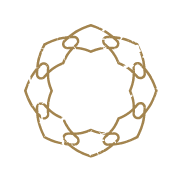Understanding the Scapula: Why Shoulder Blade Movement Matters in Training
Most people think of the shoulder as one joint — a simple hinge that lets you push or pull. But the truth is, your shoulder is more like a team made up of players that need to communicate. And the most underappreciated player on that team is the scapula, or shoulder blade.
The scapula doesn’t just sit there. It glides, rotates, tilts, and slides along your ribcage every time you move your arm. Think of it as the base that everything else depends on. If that base doesn’t move well, your arm ends up doing the work alone — and that’s when things start to fall apart.
In a push up, for example, most people think of bending and straightening their elbows. In a row, they think about pulling with their arms. But the truth is, both of those movements begin at the scapula. The shoulder blade should glide smoothly — forward and around the ribs as you lower in a push up, and back toward your spine as you pull in a row. When that motion doesn’t happen, you’re basically lifting without your foundation.
This is why so many people feel shoulder pain or never seem to get stronger no matter how many push ups or pull ups they do. They’re training isolated parts of the movement instead of the whole thing. They’re chasing effort instead of awareness.
The scapula connects the arm to the torso. That means it’s not just about shoulder strength — it’s about how the whole body supports a movement. When your shoulder blades move well, your spine, ribs, and even your breath start to join the party. You stop “doing” the exercise and start feeling it.
A good cue to play with is this: before your arms move, feel your shoulder blades move first. In a row, that means your scapula slides back before your elbow bends. In a push up, your shoulder blade wraps forward around the ribs before your elbows straighten. It’s subtle, but it changes everything.
If you think about it, that’s what training really is — learning how to move from awareness, not habit. The scapula is just one example of that bigger lesson. It’s a reminder that strength doesn’t start with effort. It starts with attention.
